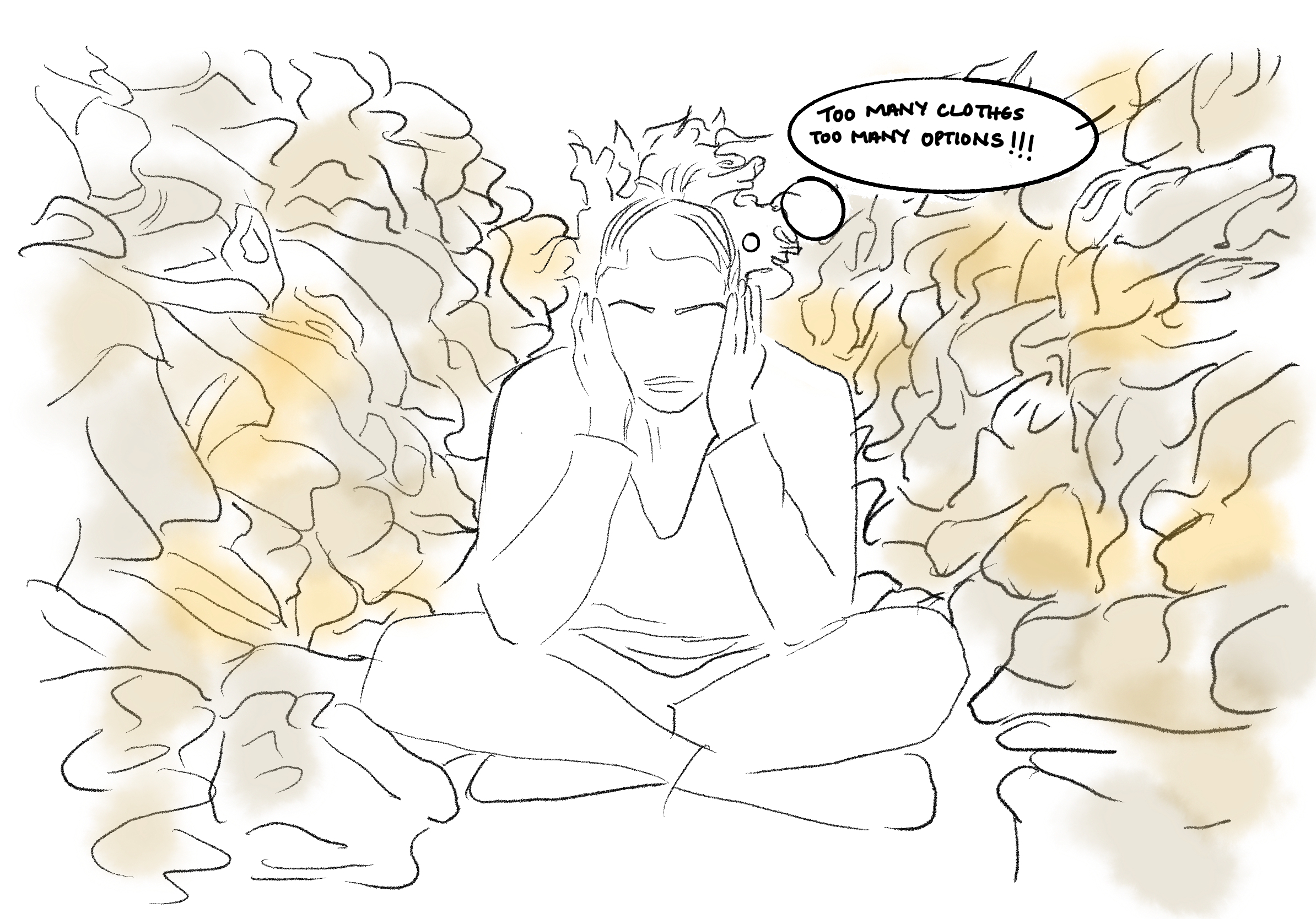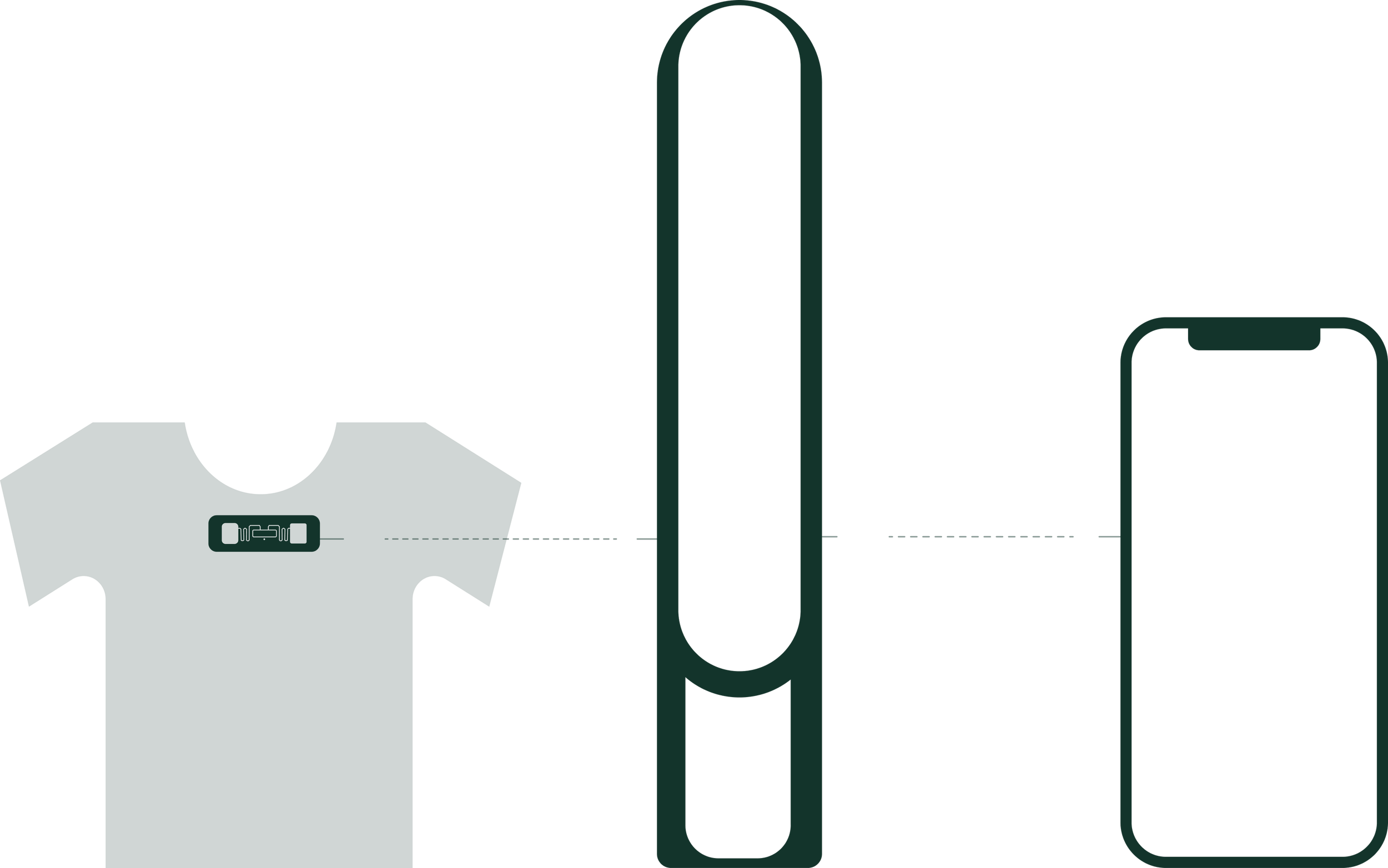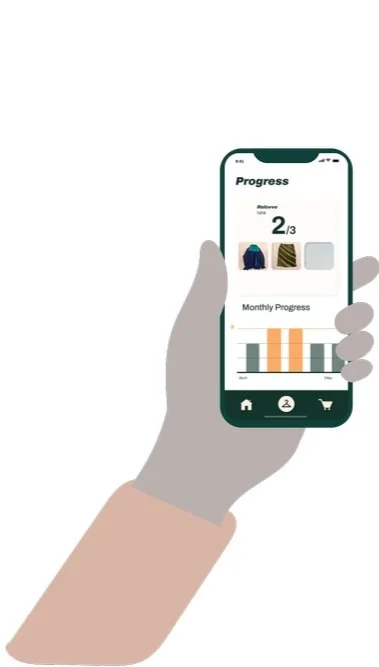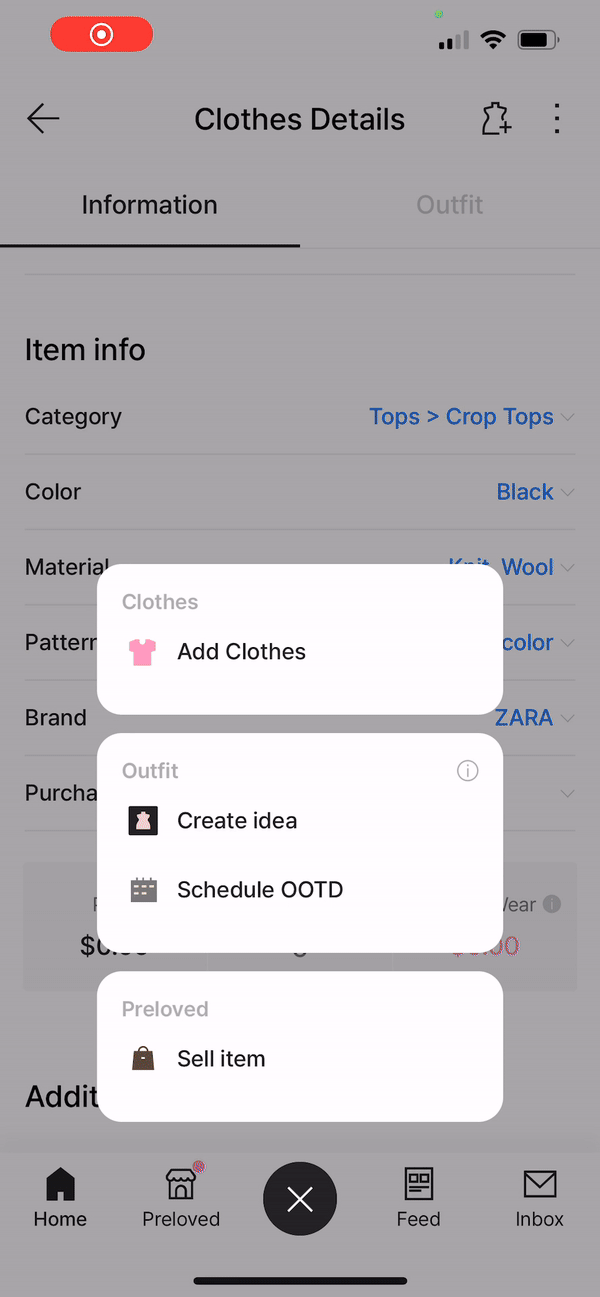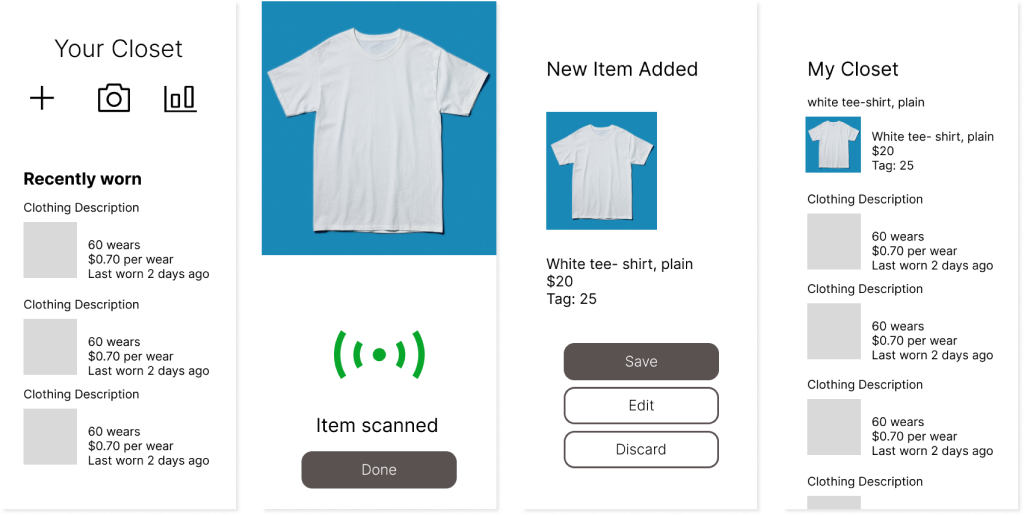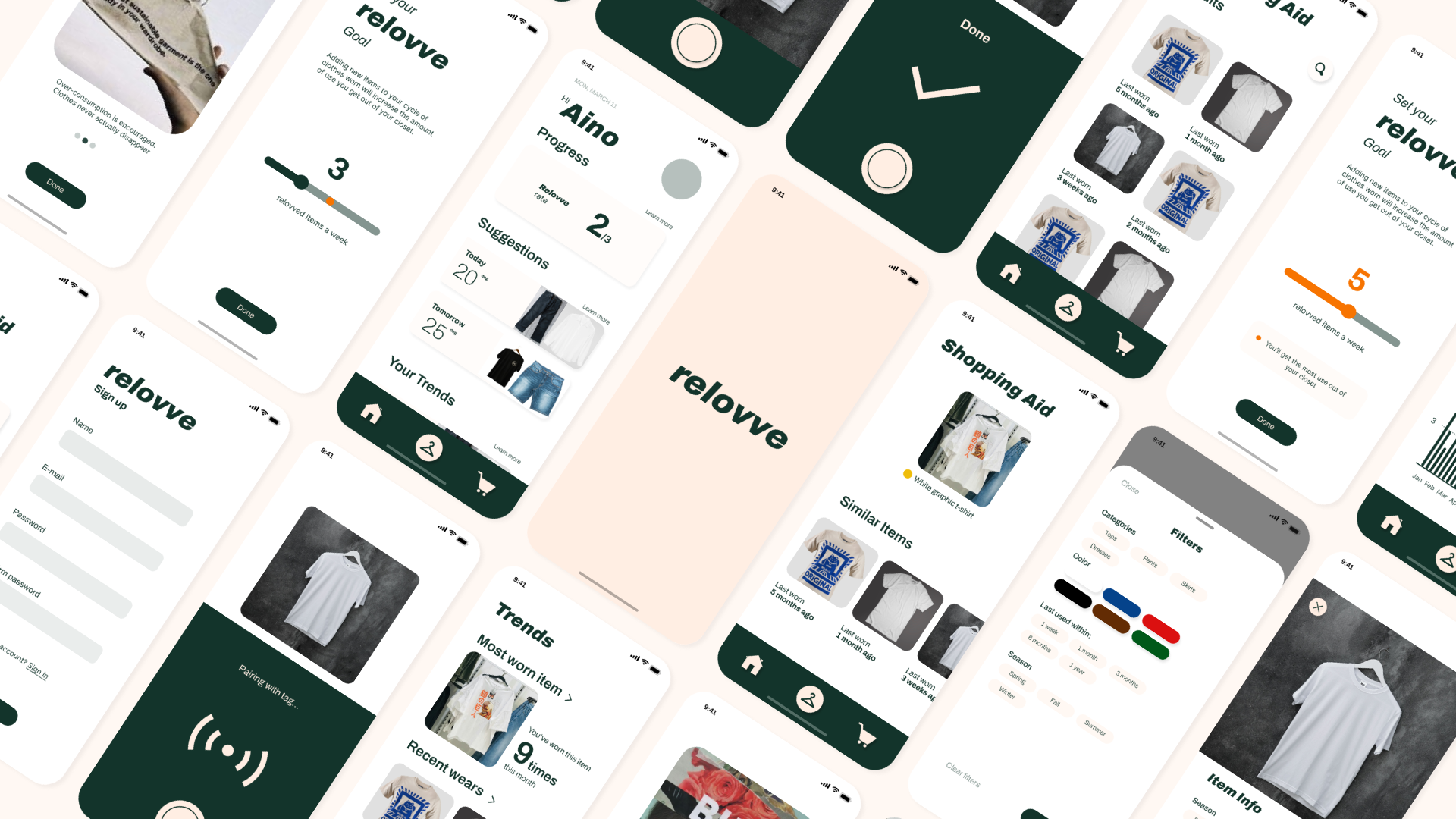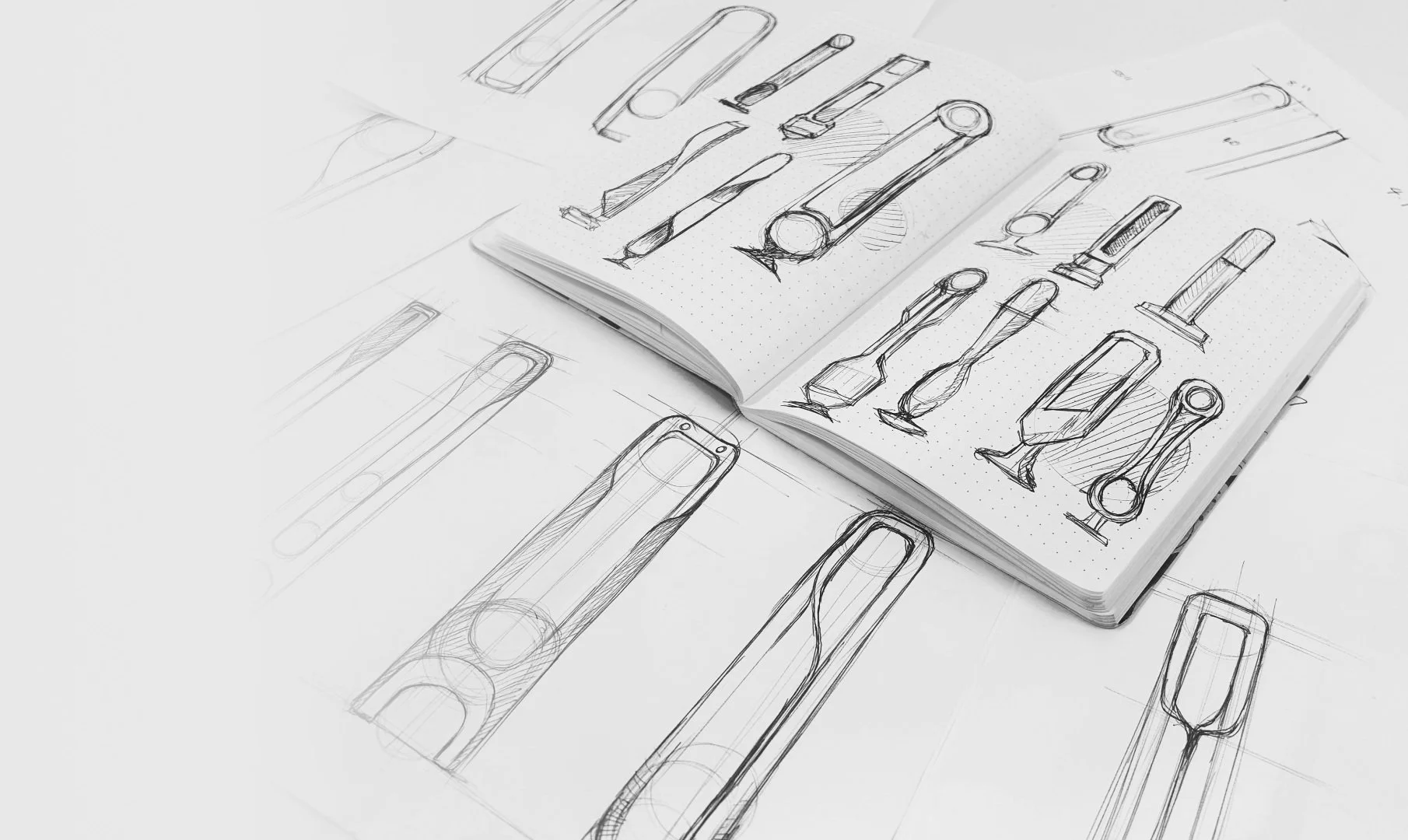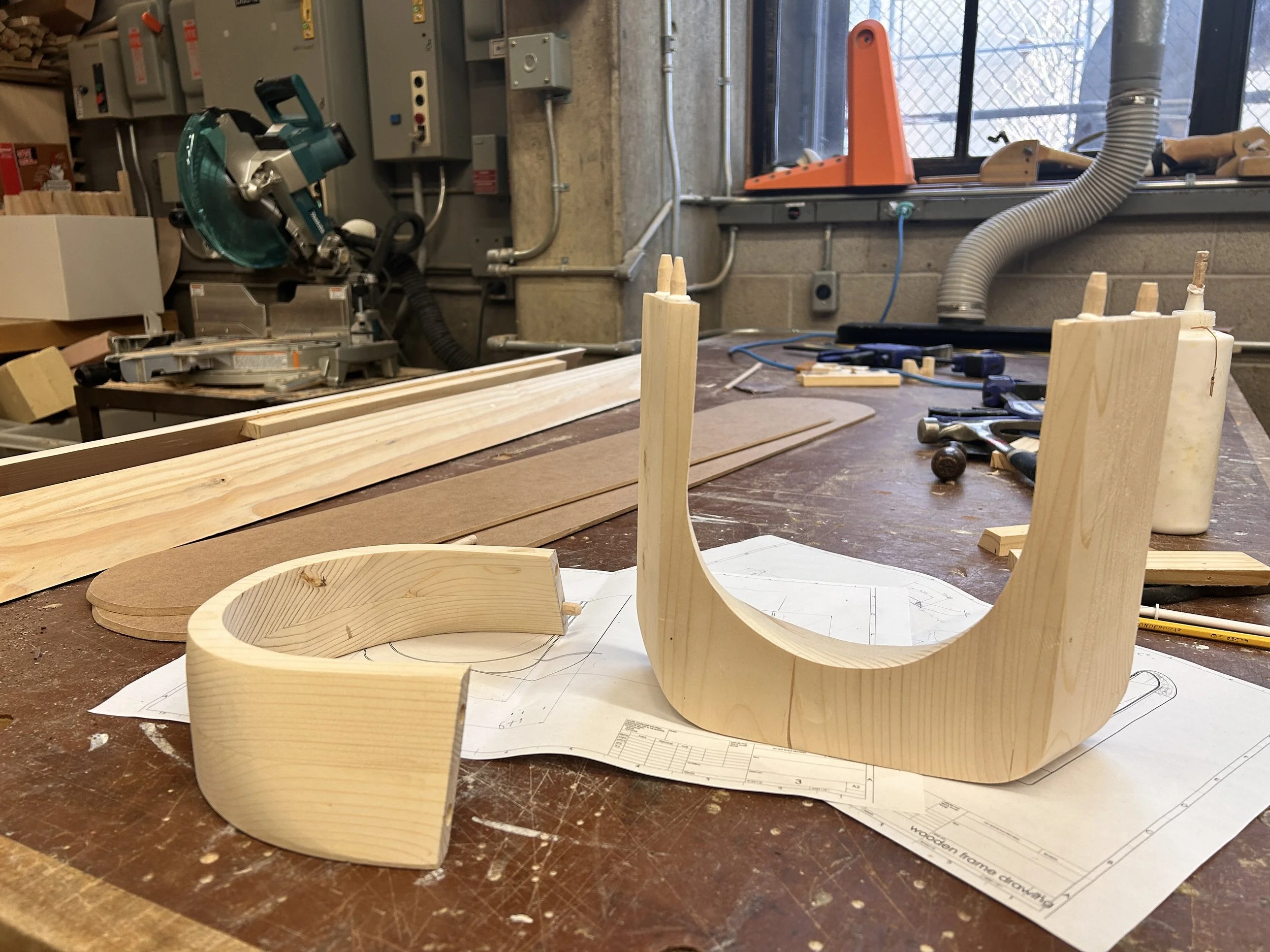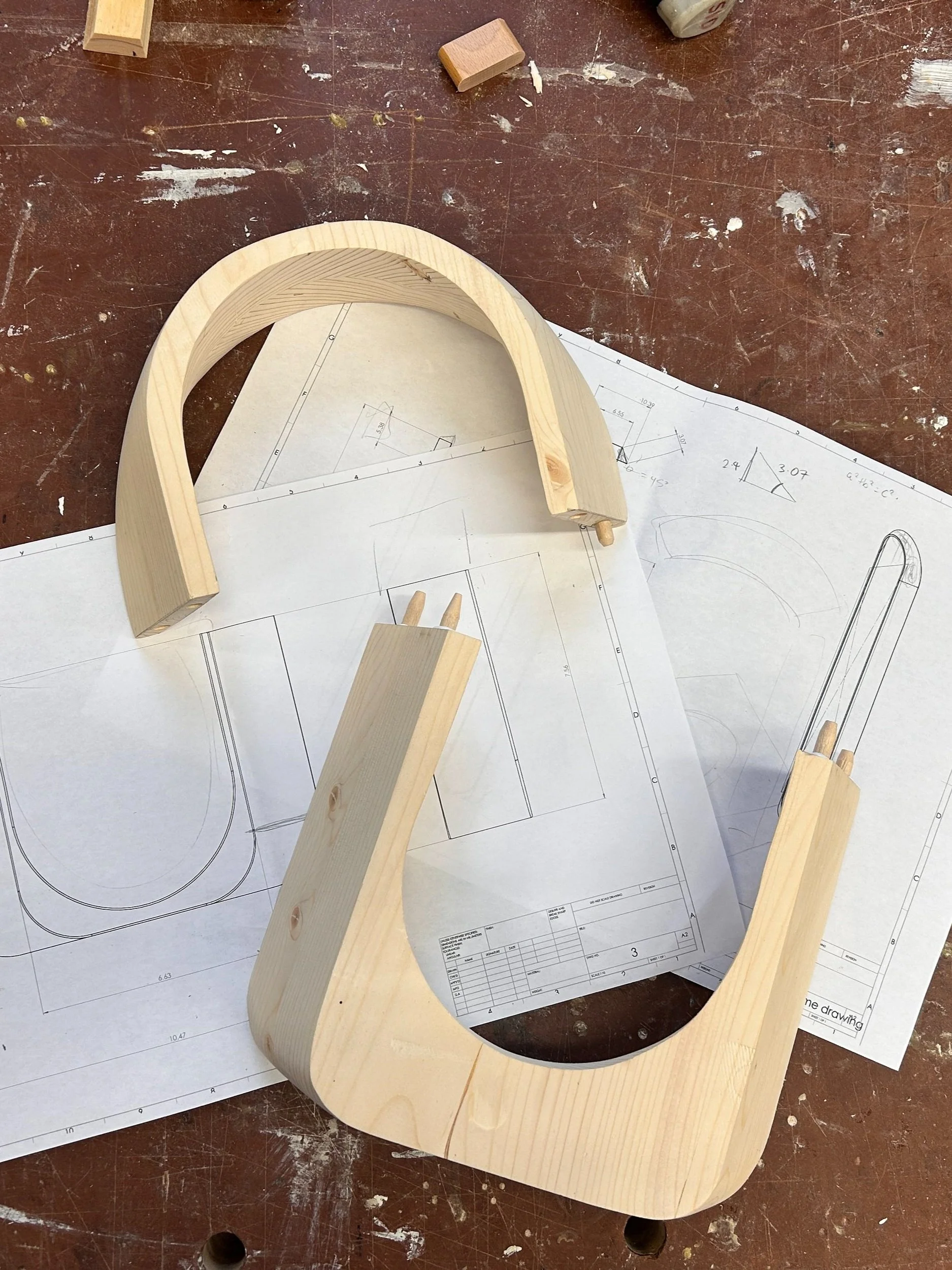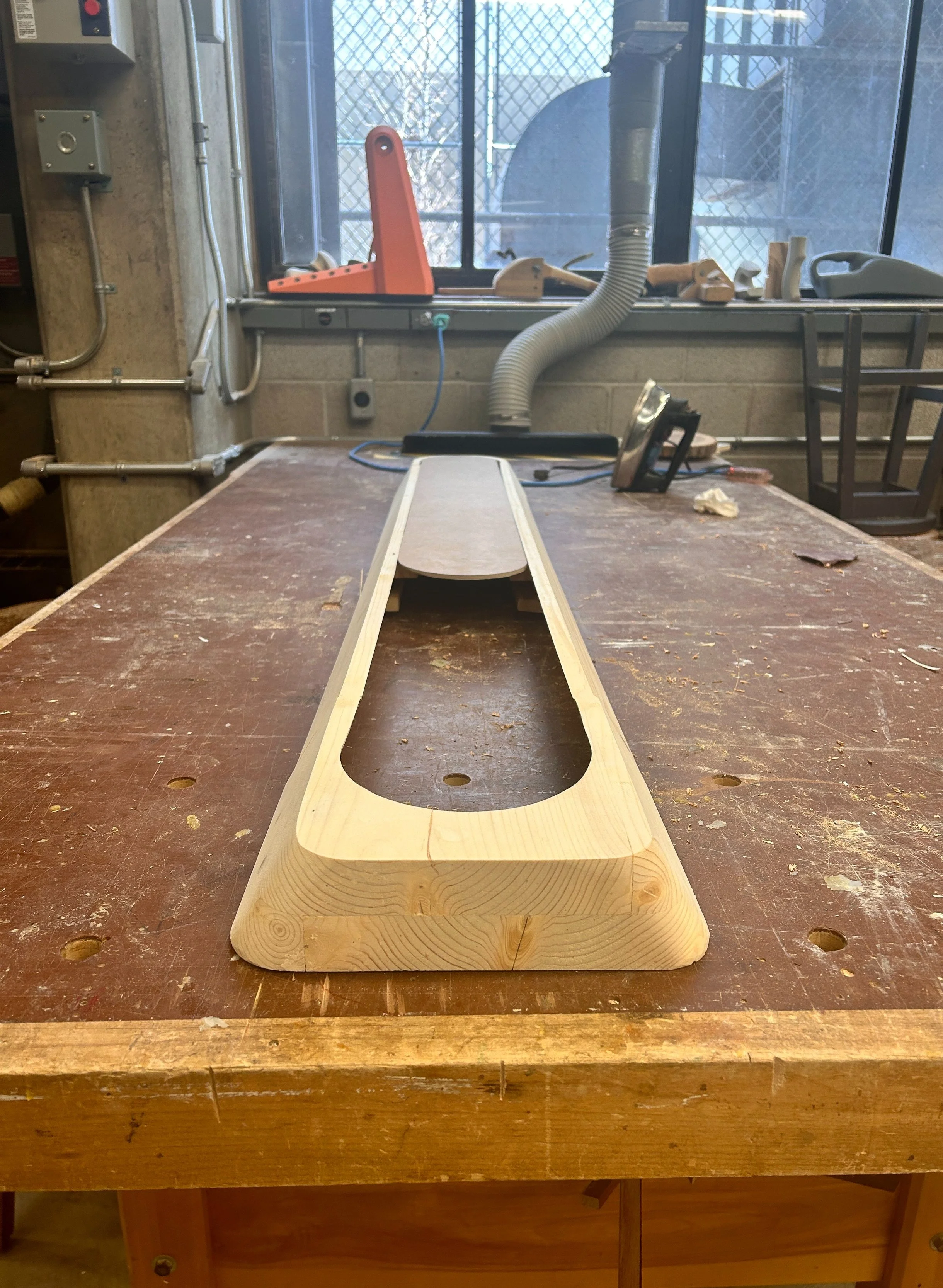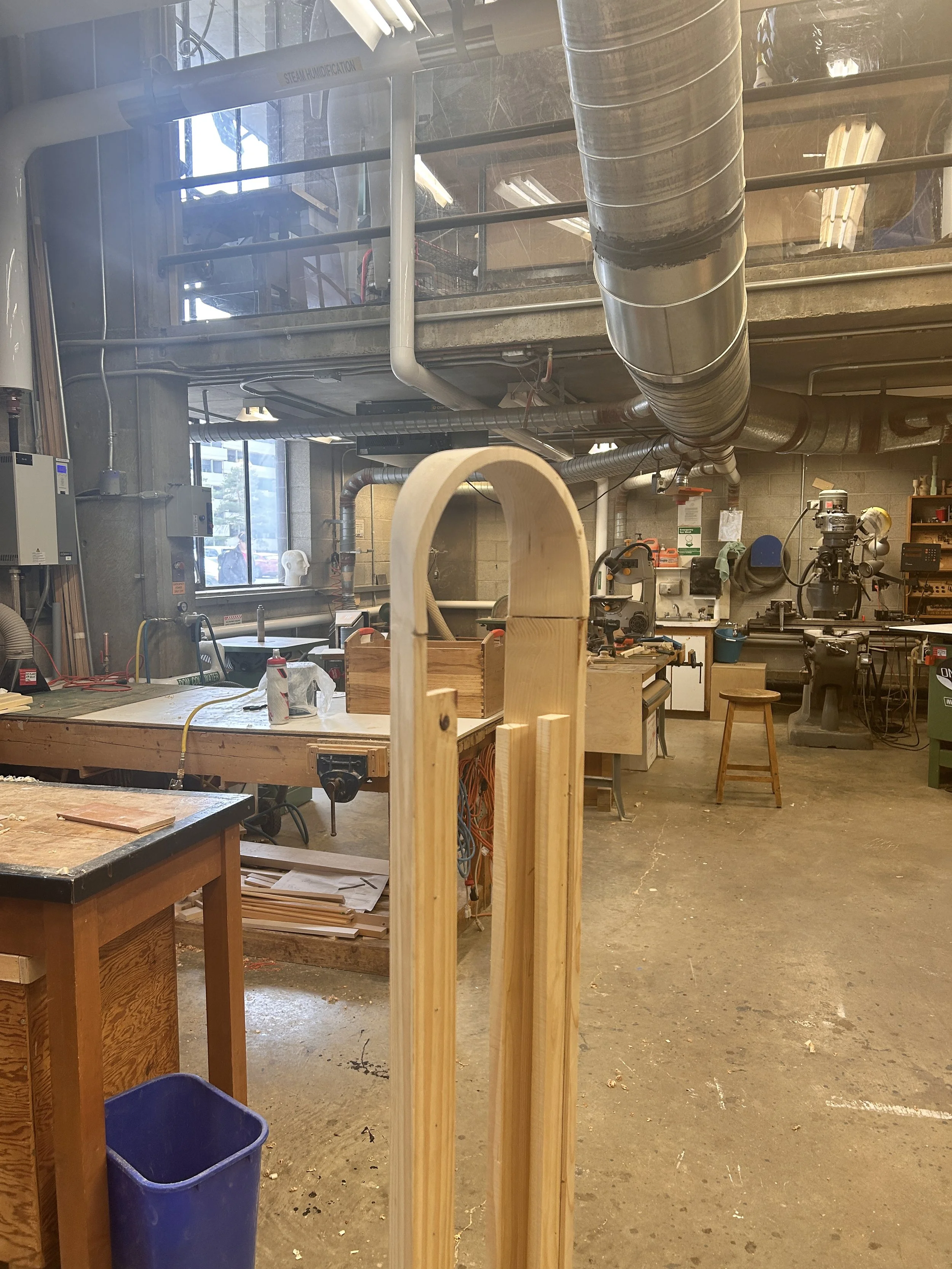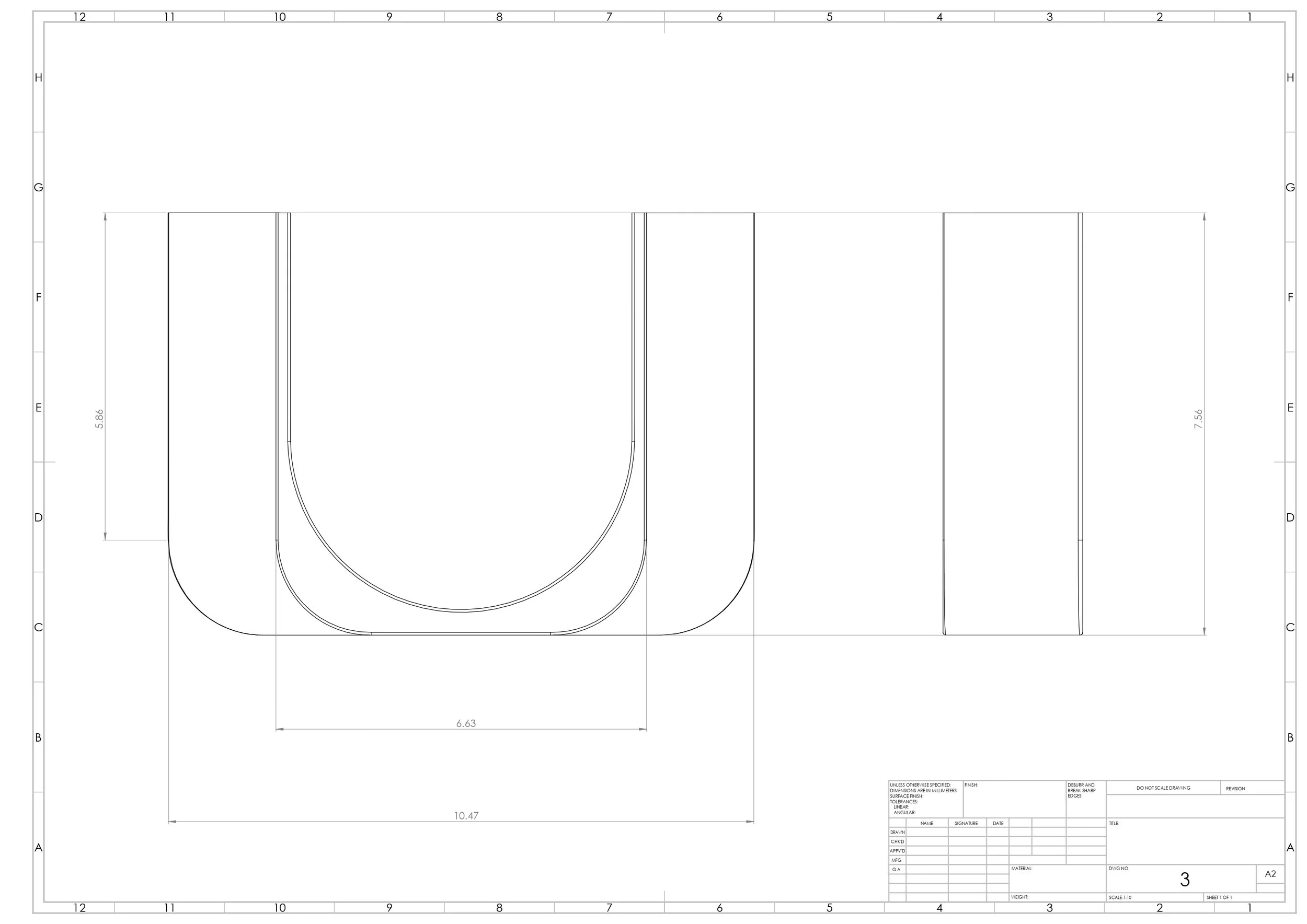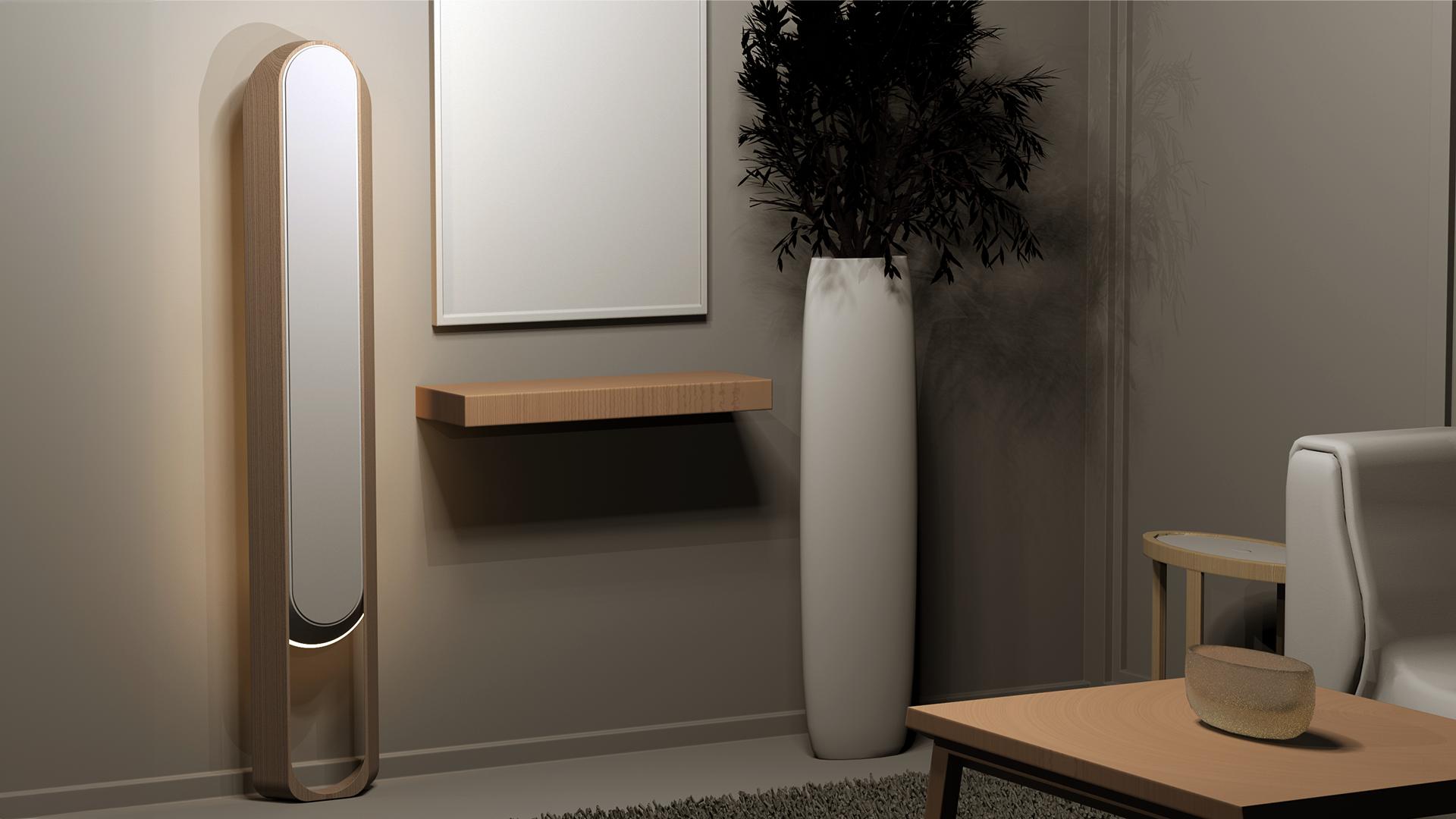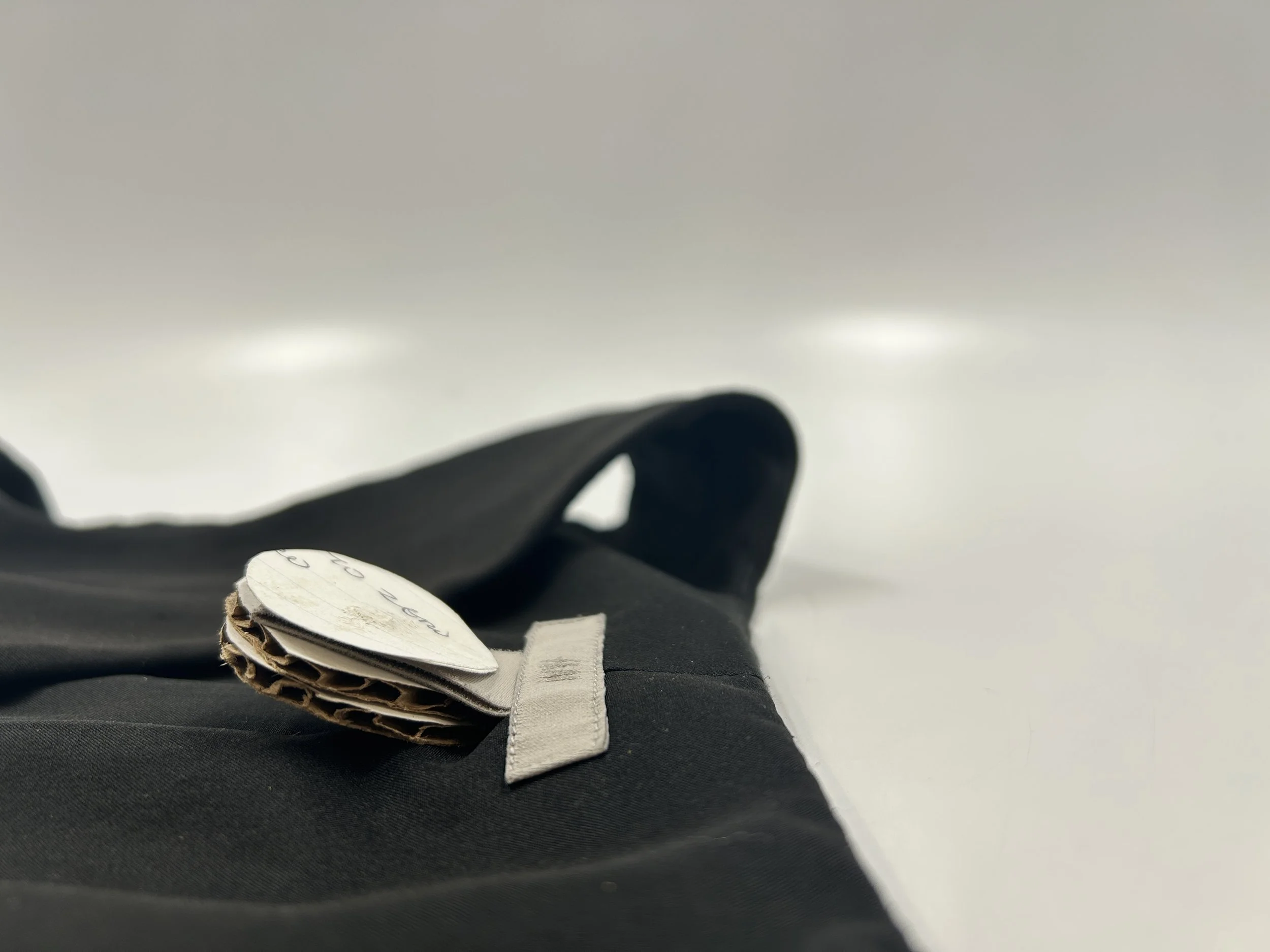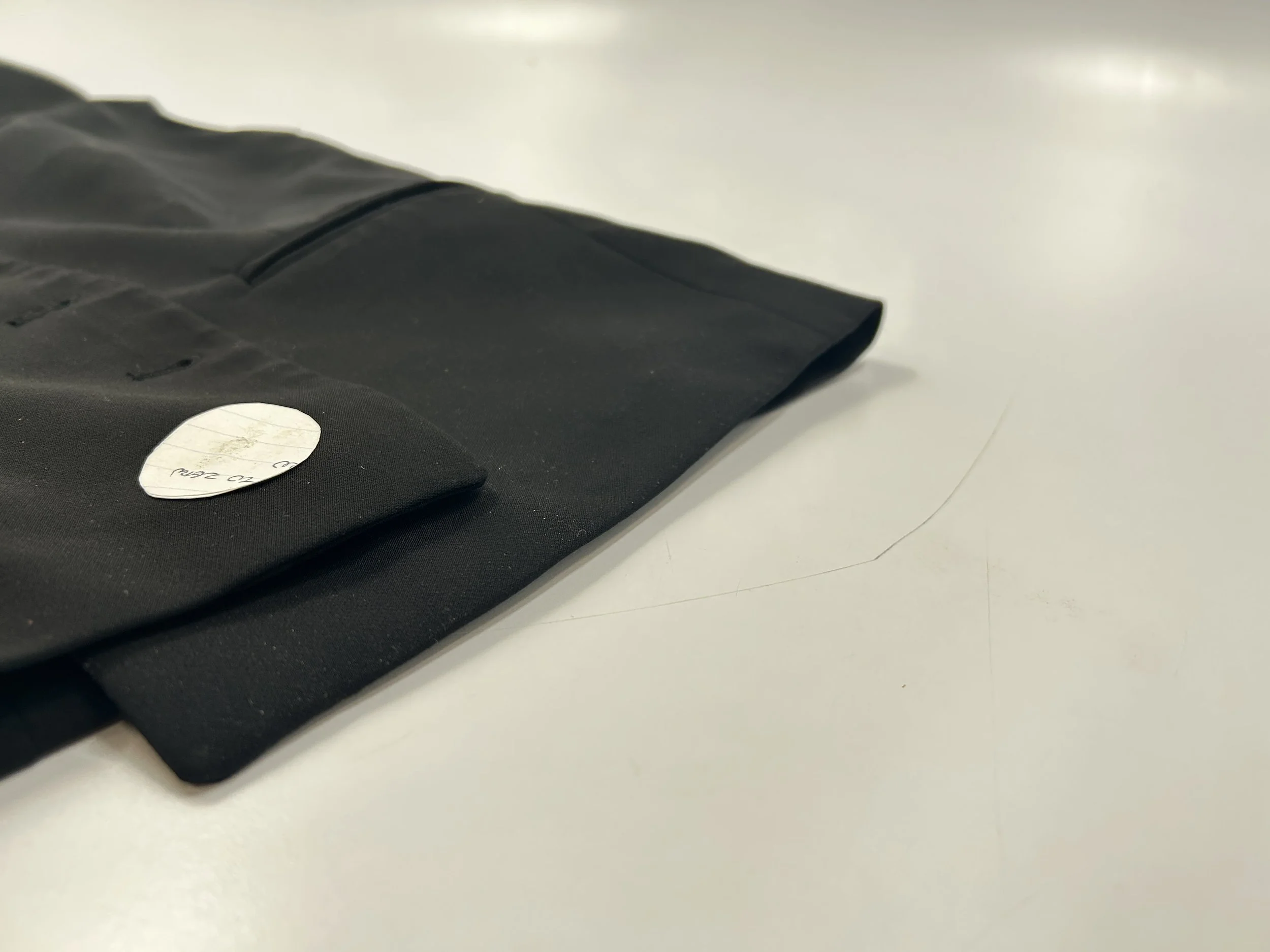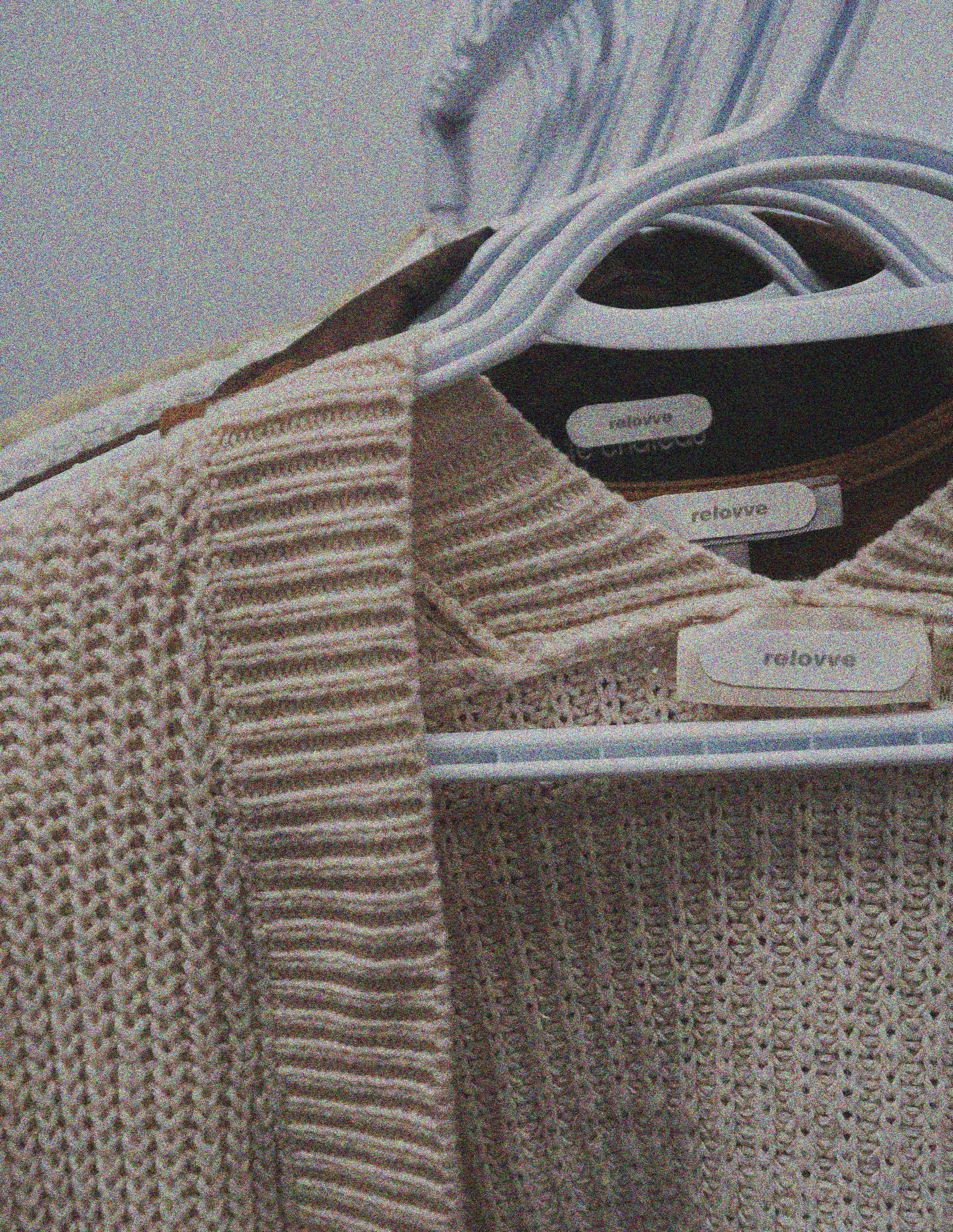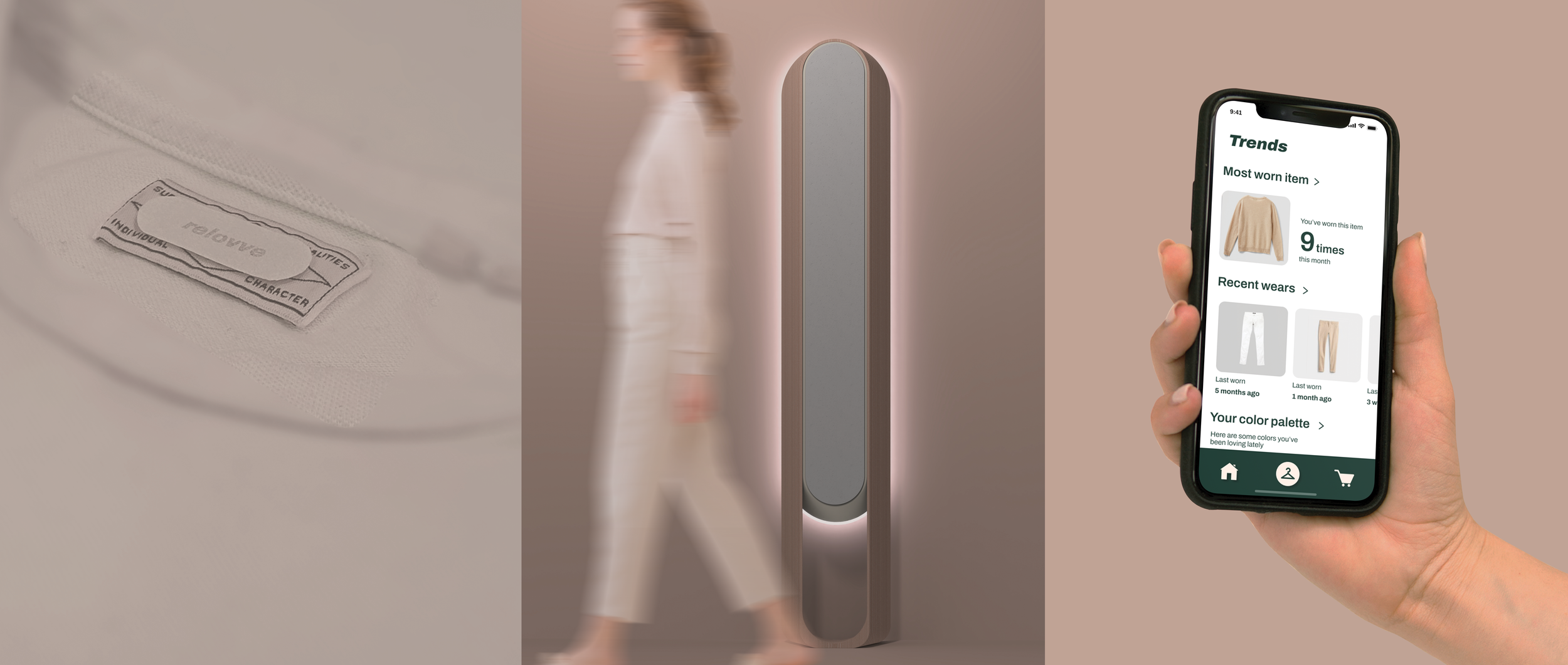
A system to aid sustainable fashion choices using automated data collection
INDIVIDUAL PROJECT
2023/2024
8 MONTHS

background
The fashion industry is one of the biggest contributors to pollution...
Its carbon emission are 2x the flight and maritime industry combined.
Contributors to this problem are
increased consumer demand and over-consumption
People continue to…
Buy more
aquiring more clothes than they need
use less
fewer items are used on a regular basis
choose poorly
Buying decisions are less objective when buying clothing
Solution Overview
Relovve is a system to help users make more sustainable decisions about their closet usage through quantitative data colletion.
The system uses RFID technology to track and log items in the user’s closet, displaying this information on the app. It operates similarly to anti-theft gates and security tags in retail settings.
With Relovve, users are able to
Buy less
acquiring only the clothes they need and will use effectively
use more
by having a larger rotation of clothes
choose better
when they need to add a new item to their closet
user flow
4
View and track your closet usage on the Relovve app
Attach RFID tags to clothes and set up digital closet
1
Choose your daily outfits
2
Daily outfits are recorded by the reader
3
system development
The App
What’s out there right now?
To get a better understanding of the closet tracking apps that already exist, I downloaded and used the most recommended closet tracking app on the market - Acloset
initial IDEAS
The intial focus was purely data collection. The app was seen as the method to view the collected data.
But displaying data may not be enough to trigger a change in user behavior.
further development
The need to set a goal and use gamification as part of the app came into play in order to promote user behaviour change.
After user testing and seeking feedback from professional UX designers, the wireframe of the final app was created.
FINAL DESIGN
The reader
The initial goal was to create form that would be intriguing and act as a conversation starter on the topic of clothing and sustainability
However, going down this route may be more polarizing as people have stronger opinions when it comes to more expressive art.
A moodboard was created to guide the form of the reader
Full scale model
A full scale model was created in order to fully determine the final form, as well as explore methods of production.
final design
the tag
Various methods for attaching RFID tags were explored, including using magnetic hardware and permanent fabric adhesives.
FINAL DESIGN
The final decision to use permament fabric adhesive of fabric tags was made. This would reduce the cost per tag and make the installation process alot easier for the user.



